I just got a software-defined radio (SDR) and am trying to record GPS frequency (L1 1575.42 MHz). I understand that GPS is modulated using Binary Phase Shift Keying. I also read about the Nyquist rate which says that I would need to sample the signal at 1575.42 * 2 MHz (3150.84 MHz). Is it true that I would need to sample at 3150.84 MHz to be able to correctly demodulate the GPS signal? My SDR maxes out at 2000MHz sample rate. I'm quite a beginner to RF electronics so may be confusing things. Thanks in advance.
- 131
- 2
-
No, that 1.5 GHz is the RF carrier. The GPS signal bandwidth is much lower. You should read the manual of your SDR receiver to figure out how to receive GPS signals with it, if it is possible. – Justme Apr 04 '21 at 16:12
-
1Those who understand RF design and GPS know that this requires a suitable superheterodyne front end for your SDR. Those who DV’d my original answer (which I deleted ) are not one of them. – Tony Stewart EE75 Apr 05 '21 at 10:09
2 Answers
A more detailed understanding of the Nyquist rate would show that it requires sampling at twice the information bandwidth, not the carrier frequency. In the GPS case, there is no information at the carrier rate (1575 MHz) -- just in the modulation.
The modulation is much lower (10.23 MHz), and sampling at just over twice this would theoretically be sufficient. However to do this, you would also need a filter to keep any modulation (or noise) outside 10.23 MHz from getting to the sampler, so in practice you would need sampling at well over 30 MHz to allow a practical filter.
Note that GPS signals are quite weak, and it is unlikely a simple SDR will have sufficient signal-to-noise (SNR) ratio to function.
- 18,395
- 17
- 46
-
This is totally incorrect. You cannot sample the carrier at a lower rate to recover the modulation. (-1) and it is called CNR , not SNR for carriers. – Tony Stewart EE75 Apr 05 '21 at 10:02
-
I didn't say it would be easy, but (sub)sampling is just a form of mixing followed by sampling. – jp314 Apr 05 '21 at 23:49
-
I’d like to see how you think you can demodulate GPS RF data modulation by sub-sampling. Are you thinking of a sub-sampling oscilloscope where the sampling pulse risetime is faster than the carrier but the sampling rate is much slower. – Tony Stewart EE75 Apr 06 '21 at 10:25
-
Direct Conversion doesn’t work on GPS nor direct sub sampling the carrier , it must be down converted with an LO. – Tony Stewart EE75 Apr 06 '21 at 10:27
An LO and mixer can create an IF with double side bands with the upper sum frequency attenuated by the BW of the chip and then be sampled at a much lower f.
That’s how I would do it for GPS although for lower frequency RF, direct carrier ADC is possible in SDR’s. Of course there must be filters before and after the mixer to optimize the CNR. (Carrier / Noise Ratio) to the the IF. The SDR may be used after IF with a suitable signal level with LNA gain before and AGC after.
To those who vote without experience, let me show you how it is actually done.
There is a tradeoff between resolution, bandwidth and power. Extrapolating current A/D-converter characteristics the A/D converter for SDR on GPS would consume about 1 kW. This is far too much for mobile applications. Furthermore the digital processing requirements are several thousands of MIPS. At this moment there are no DSPs or other processors which are capable of delivering several thousands of MIPS at an acceptable power level. (A typical power level for a mobile phone is about 10 mW).
https://www.researchgate.net/profile/Roel-Schiphorst/publication/247886800_The_Front_end_of_Software-Defined_Radio_Possibilities_and_Challenges/links/0c96051c98786a4620000000/The-Front-end-of-Software-Defined-Radio-Possibilities-and-Challenges.pdf?origin=figuresDialog_download

Fig. (a) is how GPS Rx is done while (b) is what you wanted to do but cannot. This is for lower f carriers.
- 1
- 3
- 54
- 182